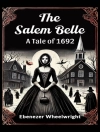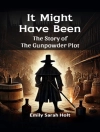In ‘The Leaguer of Lathom, ‘ William Harrison Ainsworth masterfully weaves a rich tapestry of historical fiction that unfolds against the backdrop of the English Civil War. The novel is marked by its intricate character development and vivid, atmospheric descriptions that transport the reader to 17th-century England, drawing upon a detailed understanding of the period’s complexities. Ainsworth’s literary style blends adventure and romance with a keen political insight, illustrating themes of loyalty, betrayal, and the martial valor of its protagonists. This work not only captures the tumultuous spirit of the time but also engages with the era’s broader sociopolitical implications. Ainsworth, an influential figure of the Victorian literary scene, was profoundly fascinated by history, which he often explored through the lens of dramatic, character-driven storytelling. His extensive travels and meticulous research into England’s tumultuous past, combined with his fervent interest in the romance of bygone eras, informed his writing and fueled his desire to craft compelling narratives that would engage and educate his readers about their national heritage. Highly recommended for readers interested in historical fiction, ‘The Leaguer of Lathom’ offers a gripping blend of adventure and historical detail, making it an essential addition to any literary collection. Ainsworth’s memorable characters and intricate plotlines invite readers to rethink the past while delivering an engaging, immersive experience.
About the author
William Harrison Ainsworth (1805–1882) was an English historical novelist born in Manchester. During the early 19th century, he emerged as a prominent literary figure, known for his engaging, fast-paced historical narratives. His flair for melding accurate historical details with sensational and romantic elements captivated Victorian readers, earning him significant fame during his lifetime. Ainsworth’s prolific career produced a rich catalog of works, many of which centered on roguish heroes and dramatic episodes from Britain’s past. ‘The Leaguer Of Lathom’ is a prime example of his literary style, transporting readers to the English Civil War and honoring the exploits and resistance of the Royalists at Lathom House. Ainsworth’s work is representative of the era’s Gothic revival and the burgeoning appetite for historical fiction, bridging the gap between the romanticized visions of Sir Walter Scott and the burgeoning realism that would mark later Victorian literature. Although his popularity waned after his death, Ainsworth’s contribution to the historical novel genre is undeniable, and his vivid storytelling continues to be of interest to historians and literary scholars alike.












